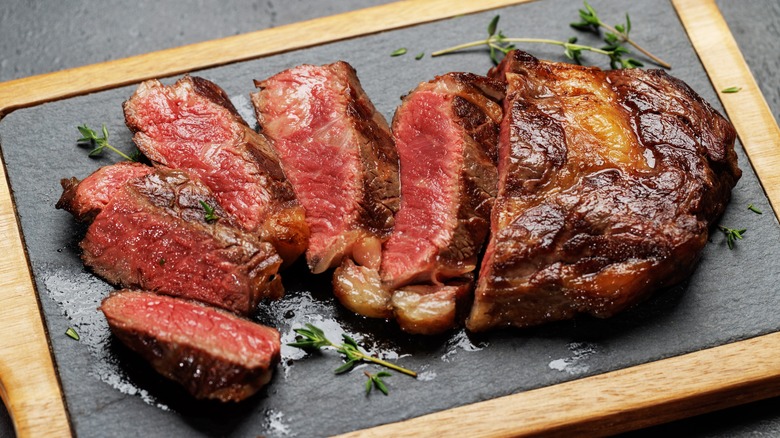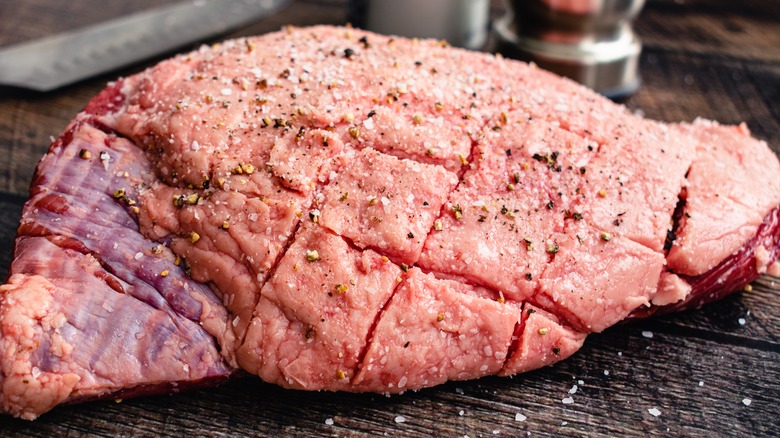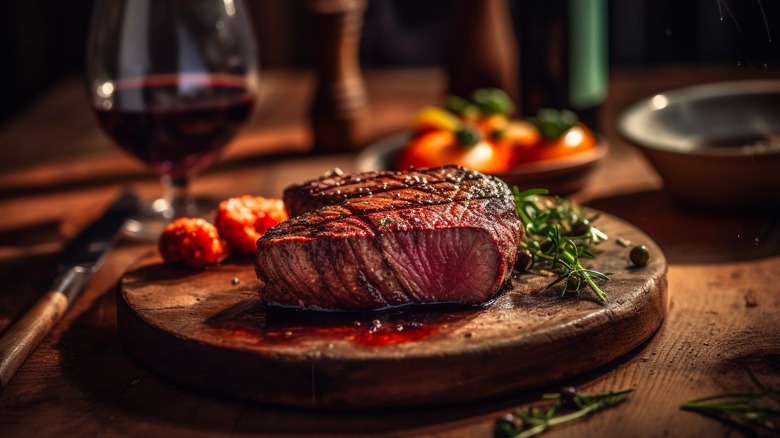The Simple Step To Give Your Steaks A Restaurant-Quality Char
The crowning achievement of a deftly cooked steak is the char: that slightly crisp, melty crust that results from a high-heat sear. Few things in our gustatory lives are as satisfying as that first exquisite forkful of a perfectly seared steak, and legions have tried to perfect a restaurant-quality char. You'll hear quite a bit of conflicting information on how to accomplish this: turn the steak frequently; turn it as little as possible; cook it over a wood fire; only use a cast-iron skillet...you get the idea. Turns out there is one fool-proof way of getting an ideal char on your steak: lightly score its surface in a cross-hatch pattern before it hits the grill (or pan).
This tip is more based on science than superstition. Scoring creates more surface area, allowing water to evaporate more efficiently and promoting effective browning via the Maillard Reaction, foundational knowledge for those who want to know how to grill a steak perfectly every time. That's all well and good, but what's really cool is that the scoring method is recommended by celebrity chefs!
Scruffed up steak
While many chefs employ this technique, some are more vocal about it than others. For example, French-trained barbecue expert, restaurateur, and New York Times bestselling author Adam Perry Lang even coined a term for scoring steaks: scruffing. He's so committed to the act that Perry titled his 2012 book "Charred & Scruffed" — so you know he's a believer. "I want to create as much browning as possible," Perry once told an interviewer when asked about his scruffing technique. "That's why often I will score the meat before it's cooked. That will increase the surface area; hence, more flavor and juiciness."
It didn't take long for Perry's idea to catch on: Scruffing has been enthusiastically adopted by Instagram-famous cook Derek Wolf, who scores his steaks before applying a kosher salt dry brine, a technique which he described in a popular video on his Over the Fire Instagram channel titled "Perfect Crust on a steak!!!" Sounds like a great result for such an easy trick, but how exactly does scruffing work?
Water evaporation and the Maillard Reaction
You might have heard of the Maillard Reaction, a poorly-understood series of chemical reactions that gives us browned deliciousness in everything from cookies to steaks. For the Maillard Reaction to work, you need high temperatures (hence the use of cooking devices like grills and ovens). But, the intense heat does not initiate the Maillard Reaction. What kicks off that process is water evaporation. Your grill can be as hot as the sun, but until the moisture is gone from the food's surface, the water will still restrict the maximum cooking temperature to its boiling point, or 212 degrees Fahrenheit.
The average naturally occurring moisture content of beef and poultry muscle is 75%, a heck of a lot more than its average protein content of 20%. (These amounts depend on several factors, of course: the kind of meat, the type of muscle, et cetera.) It turns out that leaner cuts have more water (and less flavor) than fattier ones, so shout out to the ribeye lovers out there. Scoring the top of your steak will provide more avenues for this moisture to escape when exposed to high heat. Since the goal is a crisp, seared crust and not a steamed New York strip, keep this in mind the next time you make a pan-seared, butter-basted rosemary steak.


